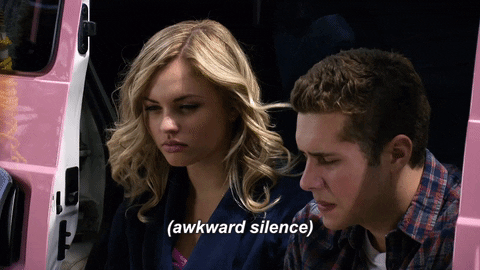Self-development expert shares the number 1 small talk mistake you must avoid
One small fix can totally level up your small talk game.
A woman and man enjoying some wine together.
The dirty little secret that people who are great at socializing know—and those who always feel awkward at parties may not—is that being a confident conversationalist isn’t necessarily something you’re “born with.” In fact, many great conversationalists are those who have worked at it and used expert advice to hone their craft.
Let’s face it, people who are great conversationalists have a distinct advantage in life; they are more likely to get ahead at work, have great first dates, and develop great friendships. One way to improve your social skills is to get better at the basic interaction we all deal with every day: small talk. Whether you’re in the coffee room at work, sitting on the train on the weekend, or having a drink with someone you met online, knowing how to elevate chit chat into something deeper and more meaningful is an important skill to have.

What's the biggest small talk mistake to avoid?
Kat Boogaard, a writer specializing in self- and career-development, productivity, and entrepreneurship, shared a valuable tip in an Inc. article that serves as a great starting point for those looking to improve their conversation skills. She revealed a common mistake many people make when initiating a conversation, which often leads to dead ends and awkward silences.
“Picture this: A professional acquaintance you haven’t seen in some time walks up to start a conversation and says, ‘Hey! How are you?’ How do you respond?” she asks. “If you’re like most people, you retort immediately with something like, 'I’m great. How are you?' Aside from just a couple of short words, you’ve really only answered his question with another question.”
Instead of responding with a pat response and another question, she recommends that you “beef up” your response. This will encourage the other person to do the same, providing a greater number of threads for the conversation to take off. “This can look like, ‘My day was great! I had a really productive afternoon meeting where we discussed our website redesign, which I’m really excited about. How about you?” Then, more likely than not, the other person will respond with an experience of their own.
Here’s how not to have a conversation:
Friend: “Hey! How are you?”
You: “Great! How are you?”
Friend: “Same old, same old.”
Awkward silence.
How to have a conversation:
Friend: “Great! I didn’t know that [mutual friend] was into swimming. Where is she taking the class?

What is the 'threading' small talk technique?
Boogaard’s advice is similar to the “threading” technique that Lorraine Lee, an award-winning virtual keynote speaker and CEO of RISE Learning Solutions, shared with CNBC Make It. Lee suggests that when someone asks an opening question, instead of replying with something predictable, respond with multiple “threads” that allow the person you’re talking to to choose where to take the conversation.
Question: “Cold outside, isn’t it?”
Predictable answer: “Yeah, I’m freezing.”
Good answer: “It reminds me of the blizzard we had a few years back. What year was that?”
The “good answer” here also gives the person you’re talking to two threads. They can speculate on the date of the blizzard or share their experience with the snowstorm. The “predictable answer” stops the conversation in its tracks.
Ultimately, being good at small talk means giving the person you’re talking to some material to work with and avoiding being predictable with an answer that makes it look like you’re on autopilot. Giving a considered, thoughtful response to someone not only gives you a new place to take the conversation, but it also shows that you appreciate their company enough to put some thought into your responses.

